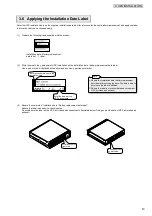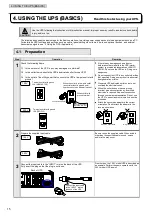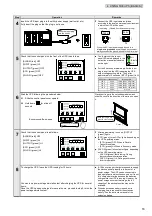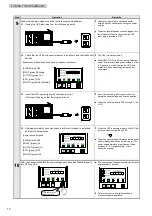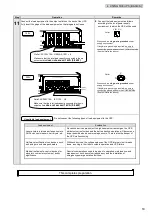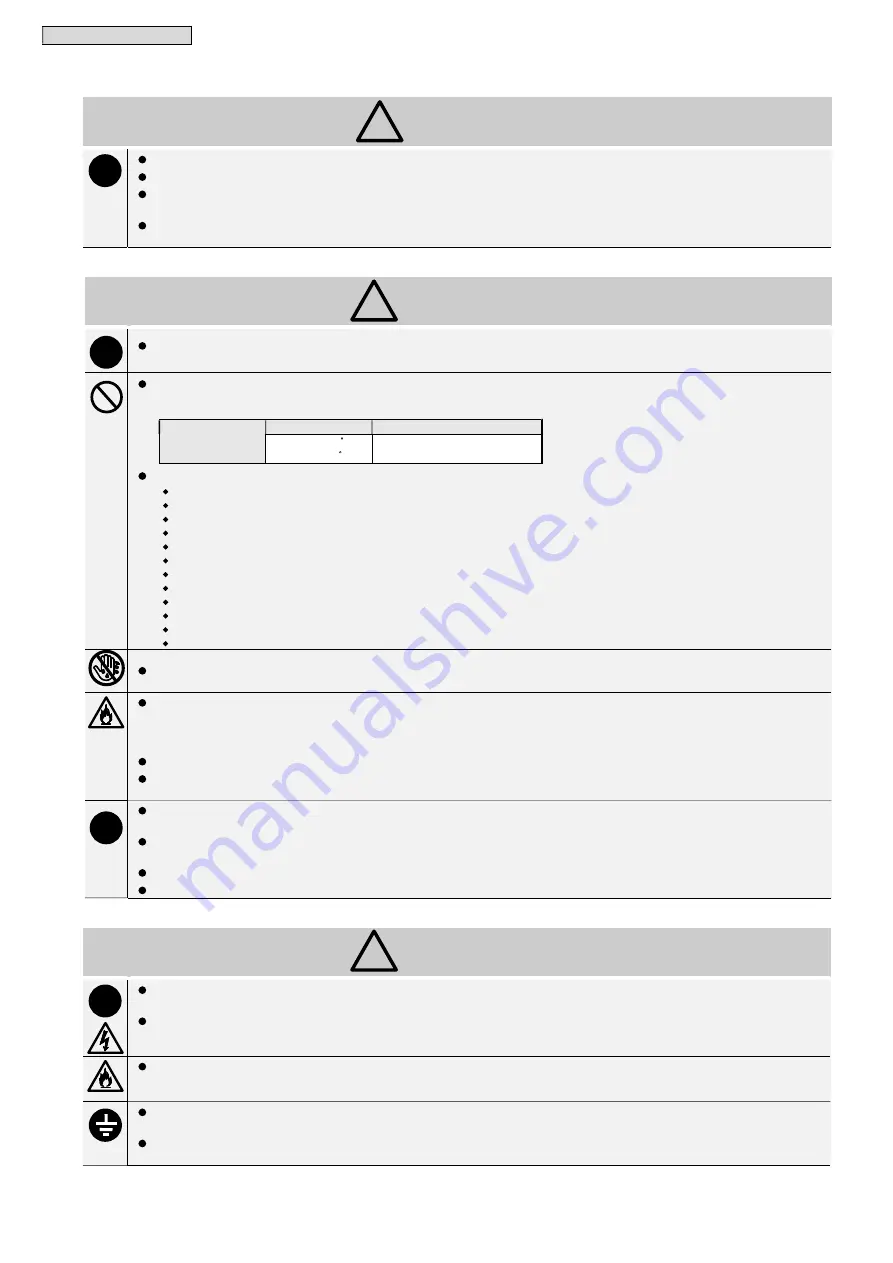
_
1.
INTRODUCTION
_
3
2. Relocation, Transportation, and Moving Precautions
CAUTION
!
Be careful to avoid overturning or dropping the UPS during relocation, transportation, and moving. It may result in bodily injury.
Be sure to work in at least pairs, and take care to prevent back strain.
Do not tilt the UPS more than 10 degrees to either side when moving it vertically. Doing so may cause the UPS to fall or result in
bodily injury. Take preventative measures to avoid dropping the UPS if it must be tilted more than 10 degrees when moving it.
Do not place the UPS on an unstable surface when relocating or transporting it. Bodily injury may occur if the UPS is overturned
or dropped.
3. Installation Precautions
CAUTION
!
Installation must be carried out following the instructions in this instruction manual. Improper installation may result in an electric
shock, bodily injury, and/or a fire.
The operating environment is as shown in the table. Do not install or store the UPS in a high temperature, low temperature, or
high humidity location that deviates from the specified environmental conditions. Doing so may cause the UPS to malfunction,
sustain damage, or deteriorate, which could result in a fire or other accidents.
Operation,
transport, and
storage
Temperature*
Humidity (No Condensation)
-10 to +55 C
(14 to 131 F)
20 to 90%
Do not operate or store the UPS in the following environmental conditions:
Where the UPS is exposed to direct sunlight
Where the UPS is directly exposed to the heat from a heat source, such as a stove
Near a device that may emit sparks
In the presence of dust, salt or corrosive or flammable gas
Where the floor is not strong enough
Where the UPS may be subject to vibration or physical shock
A high or unstable place
Where the UPS may be wet, or a place with the risk of condensation
Outdoors
In a poorly ventilated rack
A place that exceeds an elevation of 2000 m
On a ship or in an airplane, moving vehicle, or the like, or in some other special environment
Do not work on a wet floor or with wet hands or a wet body. Failure to do so may result in electrical shock.
Be careful not to block the air intake and exhaust vents of the UPS, providing at least 20 cm of space from the wall or the like at
the front and the back. If you mount the UPS on a rack, use a rack that can be well ventilated, and do not block the air intake
and exhaust vents of the rack and UPS. If the air intake or exhaust vent is blocked, the internal temperature of the UPS rises,
which could cause battery deterioration resulting in a fire.
During maintenance, the UPS requires at least 1 m of space at the front, and at least 50 cm at the back.
The area around the UPS must be ventilated. Unless the ventilation airflow (3 m
3
/h) is maintained, the gas produced by the
batteries during charging could result in case rupture or explosion.
!
Install the UPS in a location capable of bearing the UPS weight as specified in this manual. If the UPS is installed incorrectly, the
UPS may topple or fall, resulting in bodily injury. Be careful to avoid back strain when handling the UPS.
Move packaging such as plastic bags and film and accessories such as screws to a place that is out of reach of infants and
children. If an infant or child, for example, places film over his or her head or swallows a screw, there is danger of suffocation.
The socket-outlet shall be installed near the equipment and shall be easily accessible.
For pluggable equipment type B, maximum rating of overcurrent protective device to be provided external to the equipment.
4. Wiring Precautions
CAUTION
!
Wiring must be carried out following the instructions in this instruction manual. Incorrect wiring may result in an electric shock
and/or a fire.
Protection for primary circuits against over currents, short circuits, and earth faults is not provided inside this UPS.
Protection in primary circuits against over currents, short circuits, and earth faults shall be provided as part of the building
installation.
The allowable power supply voltage range for UPS input is 55 to 150 V for a 100 V system, and 110 to 300 V for a 200 V
system. Connecting a power source that exceeds the allowable voltage may damage the internal parts, resulting in a fire or
smoke.
Securely connect the grounding cable as specified (input plug). This UPS requires class D grounding work. Failure to connect
the grounding cable using the specified type may result in an electric shock.
Connect the grounding cables of all load equipment connected to the output of the UPS to the output outlet grounds. Failure to
connect the grounding cables of the load equipment may result in an electric shock.
!
!
!
*. Do not use or store the UPS for a long
period of time in an environment exceeding
+30°C (86°F). Doing so may impact the
service life of the batteries and UPS.

















